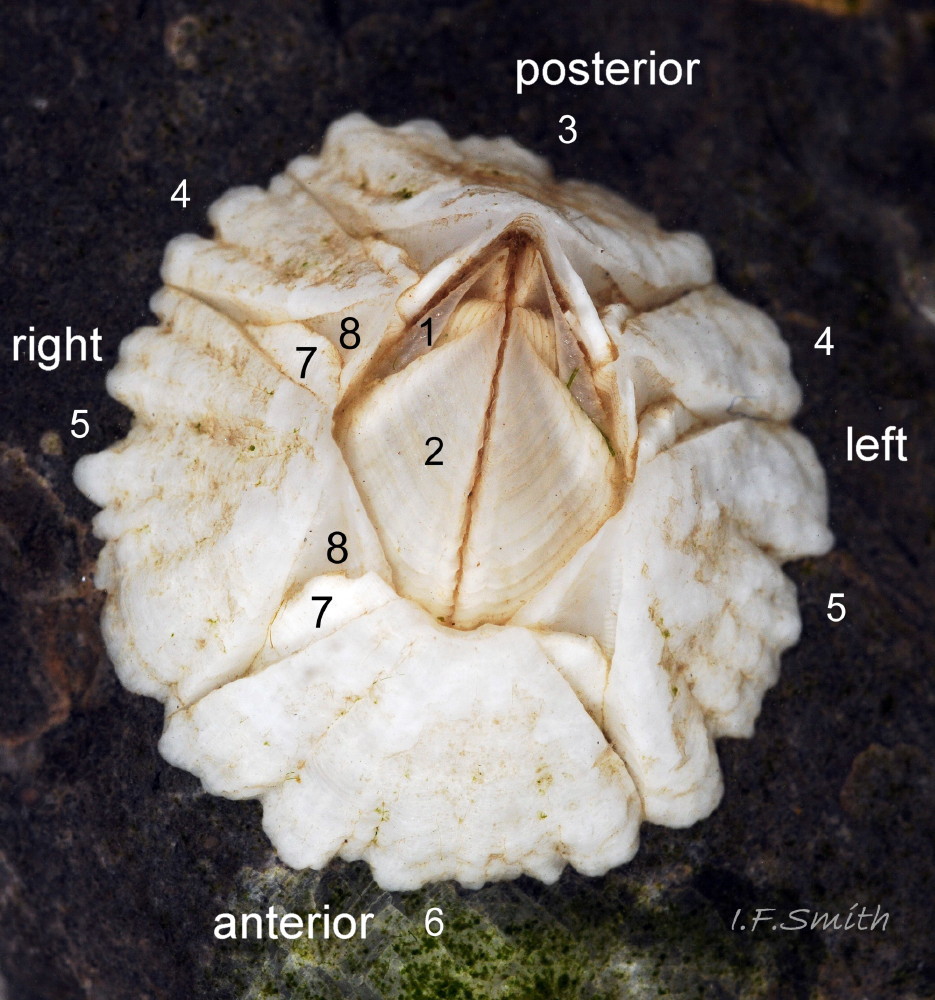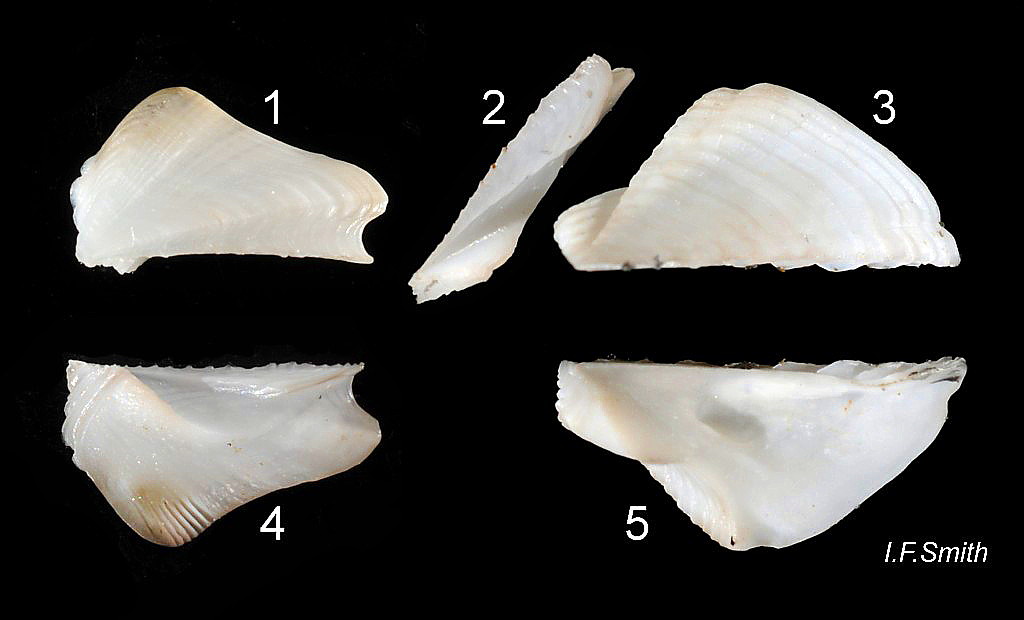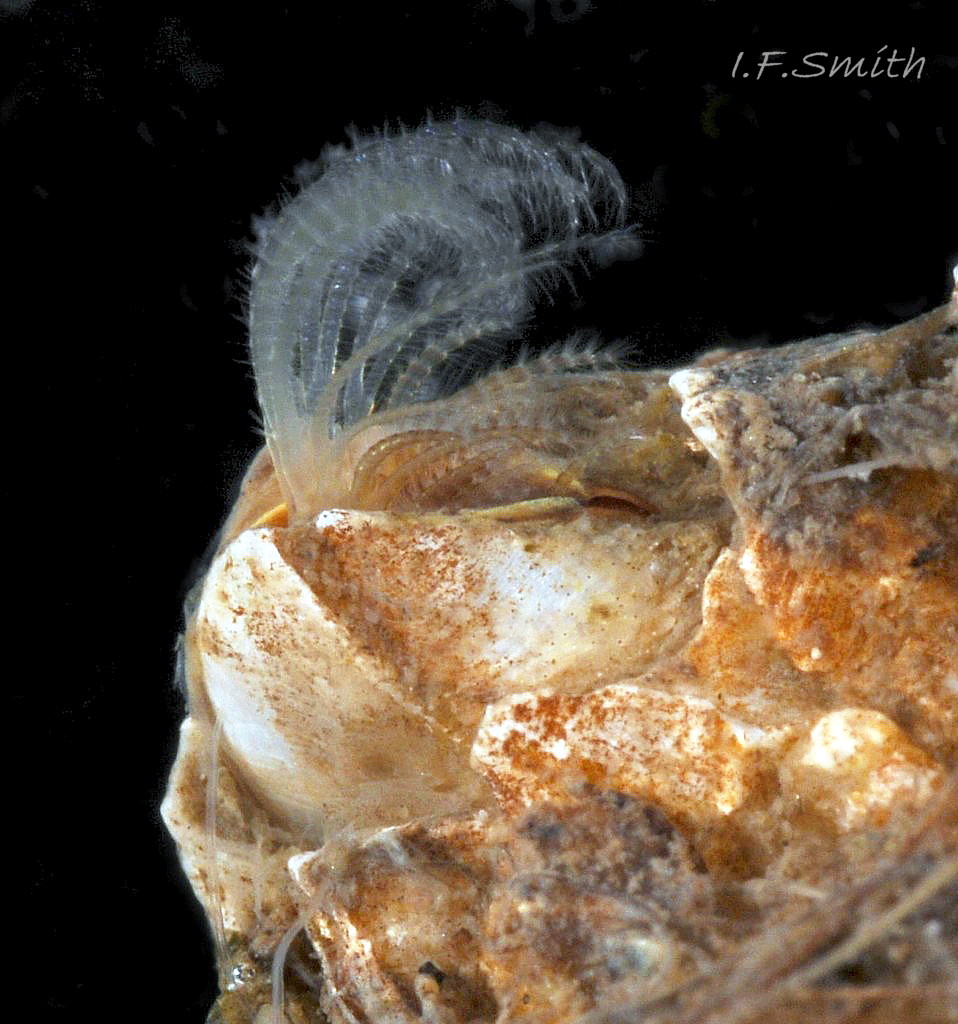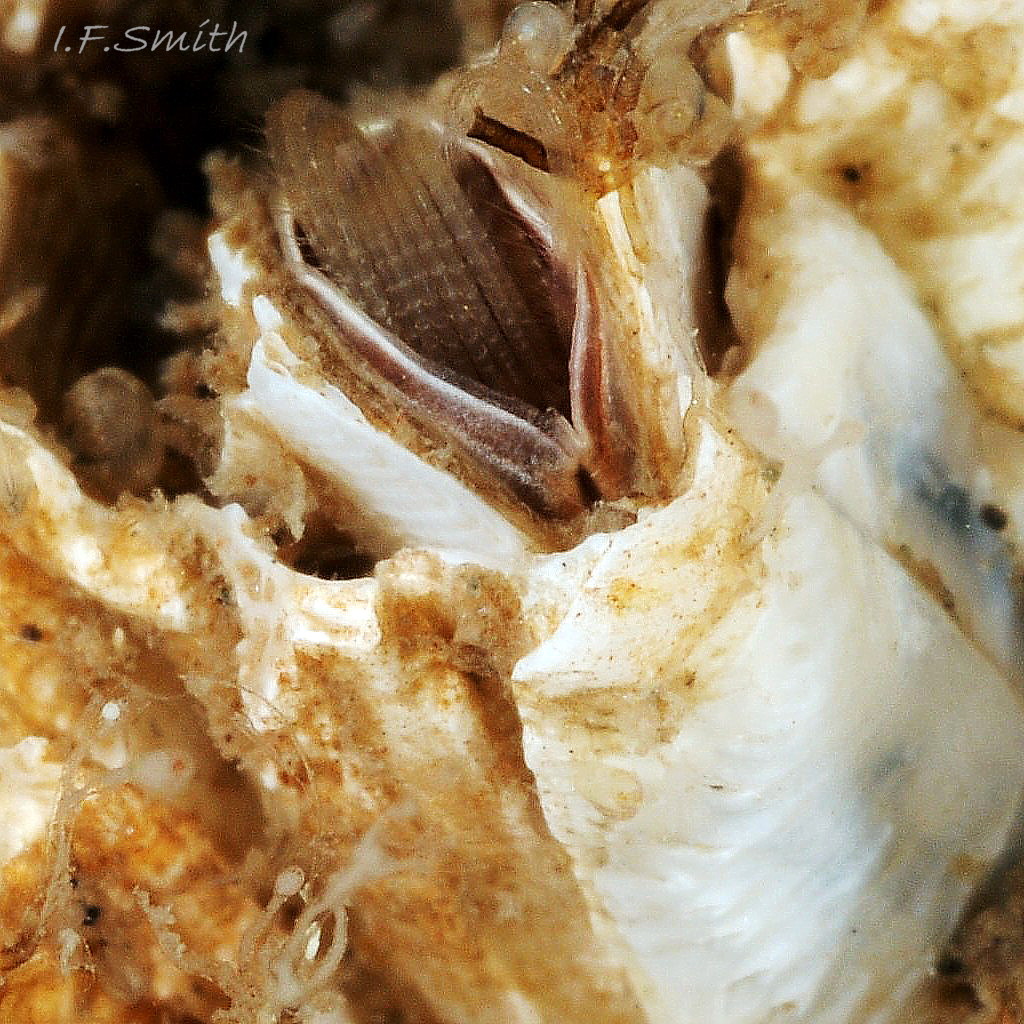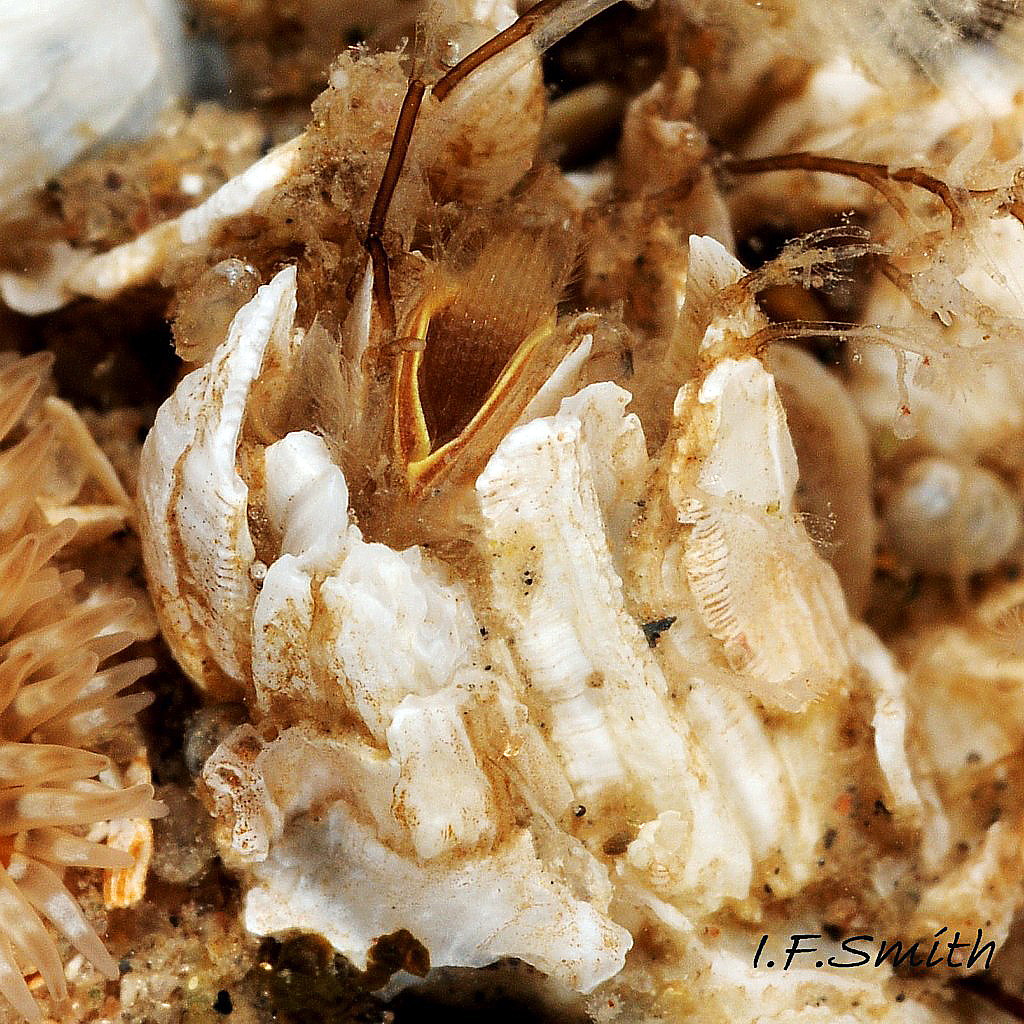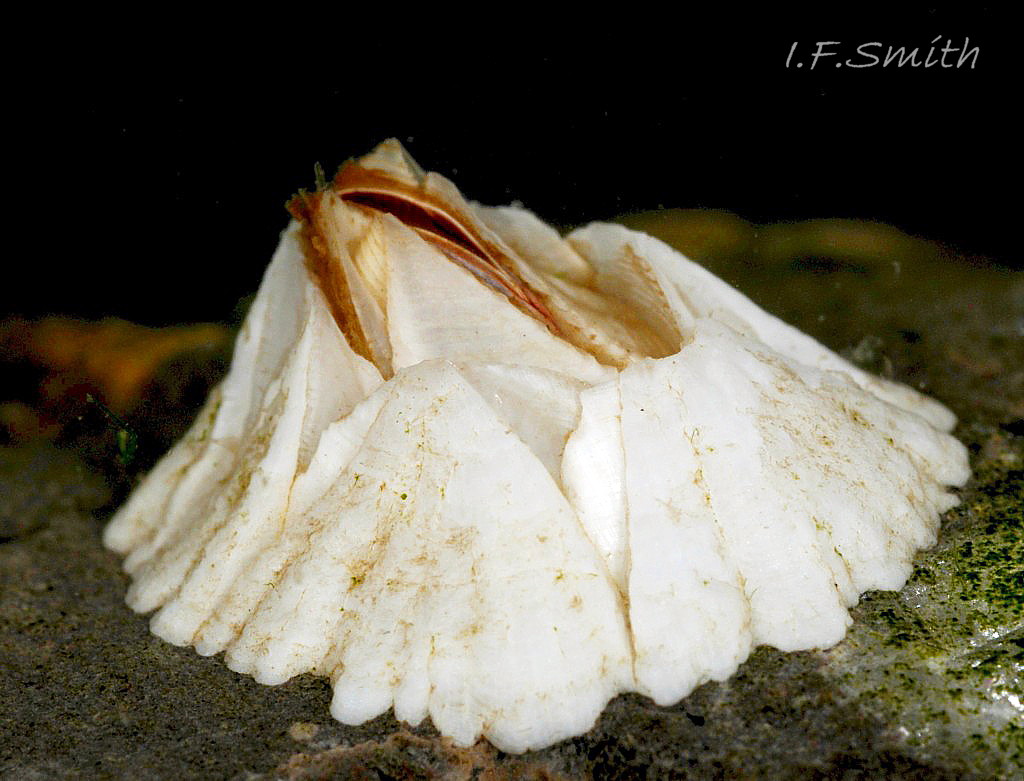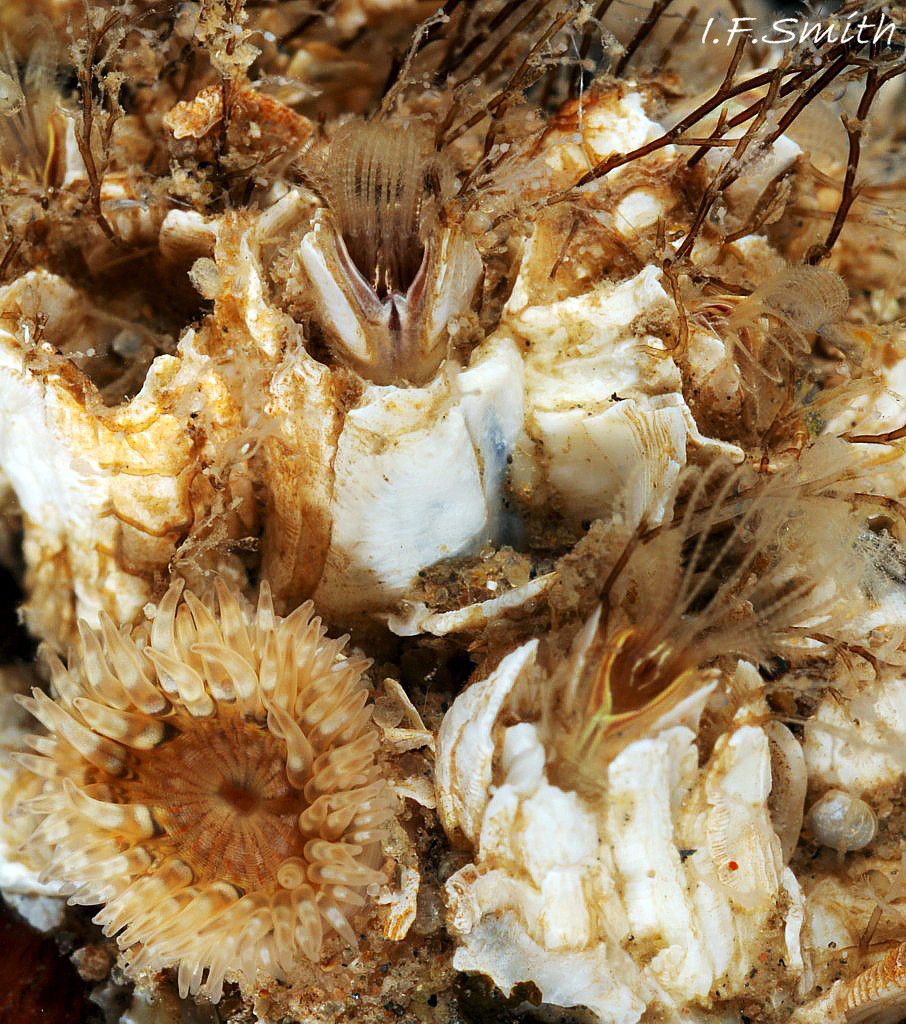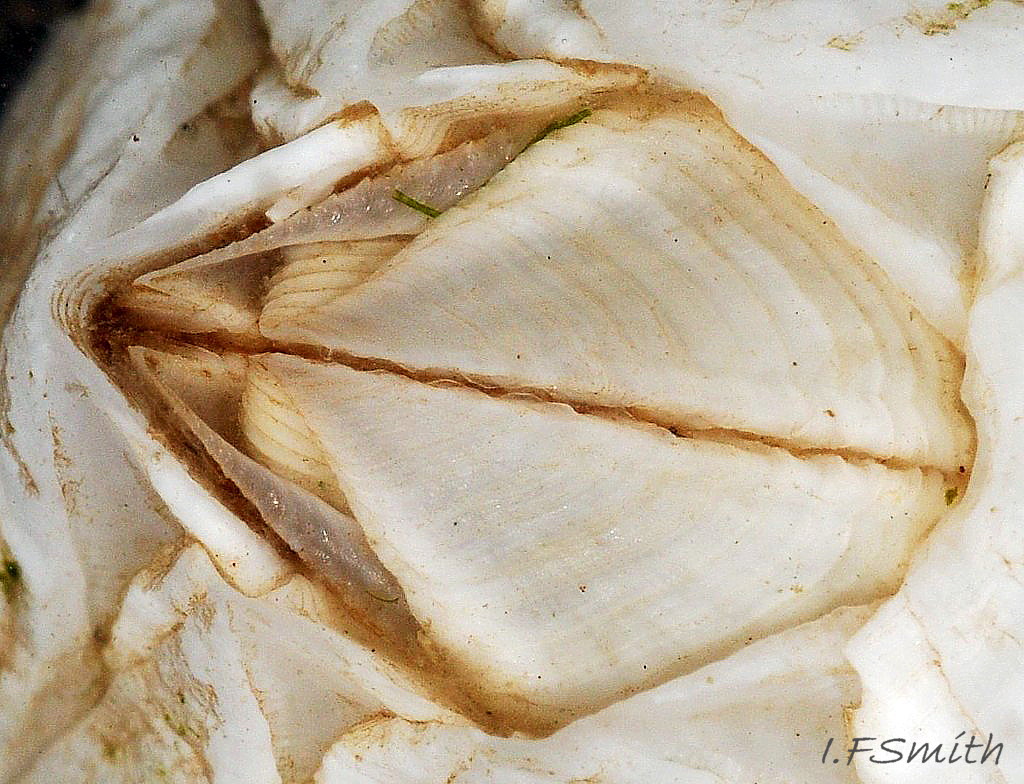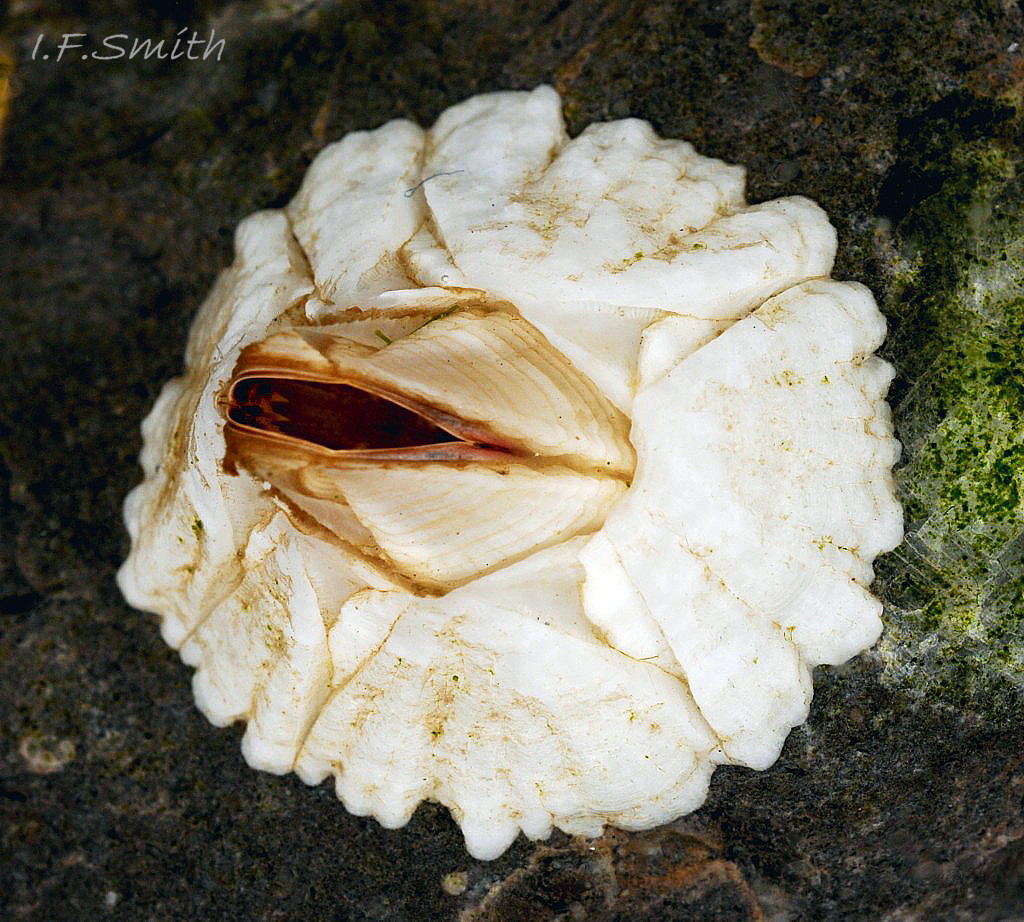Click image to enlarge with full caption
Balanus crenatus Bruguière, 1789 text I.F. Smith
Current taxonomy
www.marinespecies.org/aphia.php?p=taxdetails&id=106215
Vernacular names
Crenate barnacle, Crachen hiciog (Welsh).
Glossary below
DESCRIPTION
opercular aperture (top opening)
Carinal end acute, but rostral end very often rounded Bc1, or unangled, resulting in a pentagonal aperture Bc2.
opercular valves (lid plates)
Four valves; two terga and two scuta, which open along longitudinal midline with a tergum and scutum each side Bc10. Scutum has strong growth ridges, and very slight cross striae. Tergum has cavity into which a comb-like protruberance of the scutum extends when operculum shut Bc3. Valves erect when operculum open Bc4.
tergoscutal flaps (membranous seals on lid plates)
Bright yellow Bc6 or white Bc5, with brownish longitudinal ribbon near edge ranging from terracotta to purple-brown.
wall plates
Six smooth Bc5 or ridged Bc7, white or yellow, plates with intervening triangular recessed alae and radii in upper half of wall. When uneroded, aperture rim may be crenate Bc7. Internal vertical pores of plates may be exposed by erosion Bc1. Extremely eroded specimens resemble a mouth of bad teeth Bc6
profile
When uncrowded, low truncated cone, often highest at carina Bc7. When crowded, may grow as crowded columns up to 35mm tall Bc8, or as clumps with subsequent generations on each other Bc1.
base
Calcified plate with radial and concentric lines forming a web pattern Bc9. Detail may be eroded and unclear on worn base plates.
diameter
Usually up to about 10 mm, but can reach 25mm.
IDENTIFYING FEATURES
**Aperture : acute carinal end, rostral end blunt, so often a pentagon Bc2.
**Operculum: disarticulated valves have distinctive forms Bc3.
**Tergoscutal flaps : Bright yellow Bc6 or white Bc5, with longitudinal brown ribbon.
**Base plate: calcareous with “web” of radial and concentric lines when fresh Bc9.
**Salinity : fully marine, or nearly so.
SIMILAR SPECIES
Amphibalanus improvisus
**Aperture: often similar to B. crenatus, but carinal end of aperture of A. improvisus is usually much nearer the perimeter of the barnacle [04 Amphibalanus improvisus].
**Tergoscutal flaps: Brownish white with a distinct white rim. Black-brown mark at each end and three black-brown marks on each side which cross the white rim [01 Amphibalanus improvisus].
**Base plate: Calcareous with radial lines, often sinuous [11 Amphibalanus improvisus]. Sometimes weak concentric lines [12 Amphibalanus improvisus] resembling B. crenatus.
**Salinity : euryhaline; fully marine to almost fresh, but in Britain, usually only common at almost 0 p.p.t. where B. crenatus can not survive.
ECOLOGY
B. crenatus requires full, or near-full, marine salinity. Can live in turbid water, but not under a layer of adhering sediment. On rocks, shells and seaweed. Very common sublittorally to 200m, and near low water mark on some rocky shores. Up to surface of non-tidal marine lakes.
DISTRIBUTION
All round Britain and Ireland on hard substrate. See NBN map:
data.nbn.org.uk/interactive/map.jsp?srchSp=NBNSYS0000174080
In Atlantic, from Arctic to Gironde, France and Long Island, USA. In Pacific, from Arctic to Japan and California. See GBIF map: data.gbif.org/species/2115701/
REFERENCES AND LINKS
Rainbow, P.S., 1984. An introduction to the biology of British littoral barnacles. Field studies 6: 1-51.
www.field-studies-council.org/fieldstudies/documents/vol6…
Southward, A.J., 2008. Barnacles. London, Linnean Society.
Fouling-Atlas association, Germany. www.fouling-atlas.org/
GLOSSARY
ala – (pl. alae) side flange of wall plate, overlapped by radius of next plate.
carina – posterior wall plate adjoining the smaller pair of lid plates (terga). carinal – (adj.) of the carina.
cirri – (sing. cirrus) feather-like thoracic limbs used in filter feeding.
cypris – (pl. cyprids) final larval bivalved stage in barnacle development.
euryhaline – tolerant of wide range of salinities.
HW- high water level.
HWS- level of high water spring tide.
lateral plates – wall plates other than end plates (depending on sp., strictly may be rostro-lateral or carino-lateral).
LWN- level of low water neap tide.
micropyle – small breathing/sensing hole between tergoscutal flaps, sometimes visible when operculum shut. Found on spp. that are left out of water for long periods.
MLWS- level of mean low water spring tide.
MTL – mid-tide level.
opercular – (adj.) of the operculum (aperture lid).
operculum – moveable lid-like structure used to close the aperture.
paries – ( pl. parietes) central section of wall plate, flanked by alae and radii.
ppt – parts per thousand (of salt in water).
radius – (pl. radii) side flange of wall plate, overlaps ala of adjacent plate.
right – on right when barnacle viewed from above with rostrum at 12 o’clock.
rostral – (adj.) of the rostrum.
rostrum – anterior wall plate adjoining larger pair of lid plates (scuta). (Lost on Elminius and balanoids; place taken by fused rostro-laterals; referred to as rostrum for simplicity.)
scuta – (sing. scutum) the larger plates of the operculum (lid).
sessile – (adj.) permanently attached to substrate (of immobile organism).
stenohaline – unable to tolerate much variation in salinity.
terga – (sing. tergum) the smaller plates of the operculum (lid).
tergoscutal flaps – membranous “lid seals”, (most visible as valves start to open).

